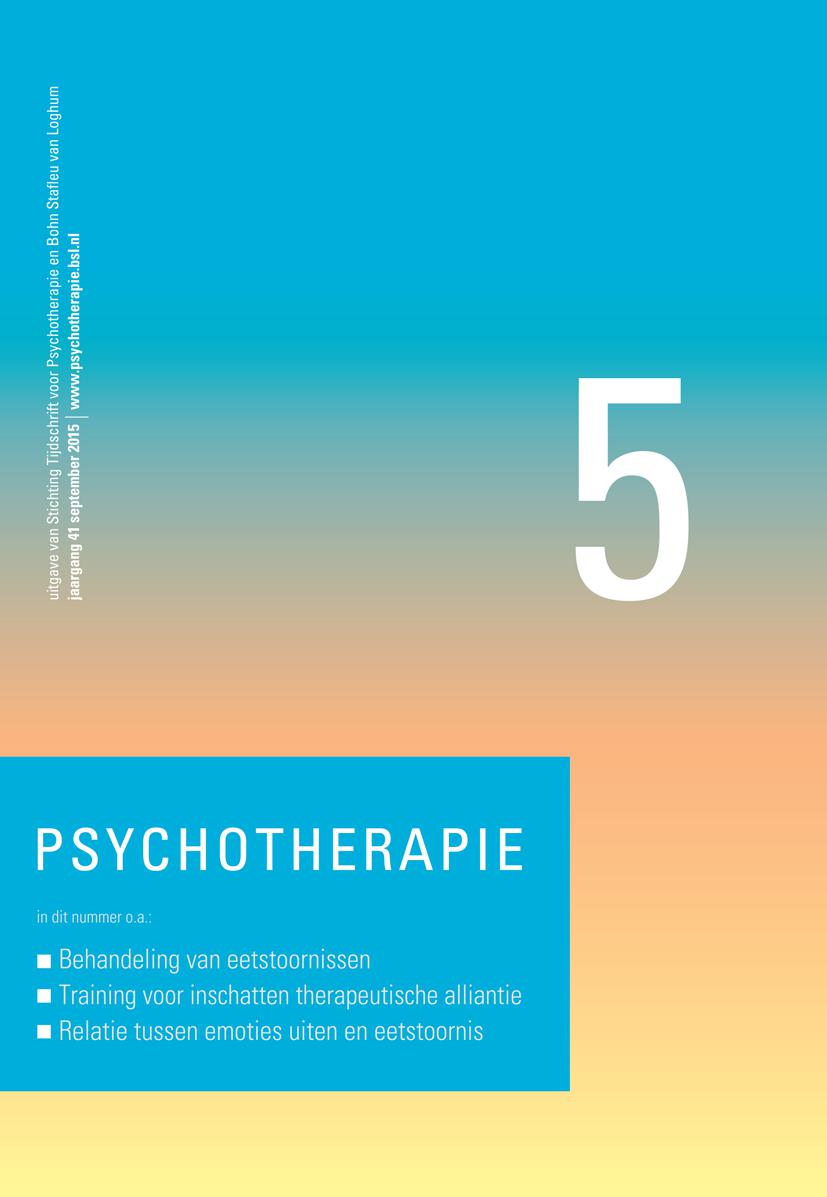Treatment of eating disorders in children and adolescents, a review
Peter J. Daansen Karin Tobias-Dillen
| • |
Eating disorders in young people are, as in adults, in comparison with other psychiatric disorders relatively rare. These
disorders can nevertheless be seriously disruptive to the patient and his environment and in some cases even require inpatient
treatment. Regardless of the therapeutic model chosen for treatment, parents should be involved in the treatment. Developmental
aspects of the child also need to be taken into account. Cognitive behavioral therapy, whether or not combined with a separate
form of family therapy is most studied. Particularly for the treatment of anorexia nervosa some family therapeutic treatments
seem to be very promising.
|
Mirroring the patient: the effect of a training on the assessment of the therapeutic alliance
Ries Buckers Fiona Willgeroth
| • |
A strong therapeutic alliance is a good predictor of treatment success in mental health care. The literature shows that therapists
have some difficulties in accurately assessing the quality of the alliance. The authors developed a short alliance training,
aimed at improving the therapist’s assessment by developing mirroring skills. This article presents a study investigating
the operationalization, measuring and training of this skill. Within the framework of a randomized controlled study, involving
38 therapists and 298 of their patients, it is investigated whether the alliance training has a positive effect on the accuracy
of the therapist judgment of the alliance as reported by their patients. Patients and therapists alike gave high (that is:
positive) alliance scores. Overall the highest ratings were given by the patients. For patients with lower ratings this ratio
changed, with therapists giving the higher scores. Both the control group and the experimental group slightly improved in
the accuracy of their judgment. The training didn’t have added value in that respect. The design of the study didn’t allow
separate analyses for the patients with low alliance ratings. In the latter case improving therapists judgment of the alliance
seems to hold the biggest promise.
|
The relation between suppressing emotions and eating disorders
Greta Noordenbos, Brenda te Have Lisa Padding
| • |
Does the degree of emotion suppression correlate with the development of emotional eating, or an eating disorder, such as
anorexia nervosa and bulimia nervosa? In total 156 people participated in this study: 32 with anorexia nervosa, 32 with bulimia
nervosa, 42 with emotional eating and 52 persons from a healthy control group. The anorexia nervosa group scored the highest
on emotion suppression, followed by the bulimia group, the emotional eating group, and the healthy control group. Based on
the scores on a scale which measures emotion suppression, the participants were divided into two groups: a light emotion suppression
group and a strong emotion suppression group. Strong emotion suppressors scored significantly higher on the EAT and the EDE-Q.
The degree of emotion suppression appears to be predictive for the nature of the following eating disorders: anorexia nervosa,
bulimia nervosa and emotion eating. For this reason it is desirable to focus on improvement of the emotion regulation during
treatment.
|

